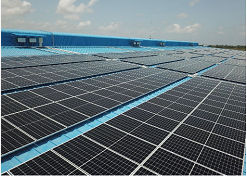2023.Feb
22
How high is the metal recovery rate of photovoltaic modules?
The recycling of photovoltaic modules is the reverse process of module packaging, that is, the relationship between packaging lamination and recycling debonding. Through the physical method, we successfully developed the special equipment for dismantling the frame of crystalline silicon components - glass dismantling, and realized the disassembly of the aluminum frame of crystalline silicon components and the complete glass. In the component separation segment, a complete set of special equipment for component classification, crushing, granulation and sorting has been successfully developed, a separation and sorting process for different components of components has been developed, and efficient separation of silicon, metal and plastic components, which are the main components of components, has been realized. The complete set of process demonstration line for the environmental protection treatment of crystalline silicon photovoltaic modules based on physical methods can process modules with a production capacity of 13.68 MW/year, covering an area of 800 square meters, with a quality recovery rate of over 93% and an energy consumption of 24 kWh/kW. , Silver, and copper recovery rates are 94%, 97%, and 97%. The physical method demonstration line does not rely on special environmental protection equipment, and all equipment can be disassembled and moved, adapting to the current situation of long-distance and scattered photovoltaic power plants in my country. Door-to-door recycling of components can be achieved through physical methods, greatly reducing logistics and packaging costs. In addition, the chemical method demonstration line has a processing capacity of 13.75 MW/year, a mass recovery rate of 93.14%, energy consumption of 13.73 kWh/kW, and silver, silicon, and copper recovery rates of 95.62%, 98.72%, and 98.86%, respectively.
Read More









